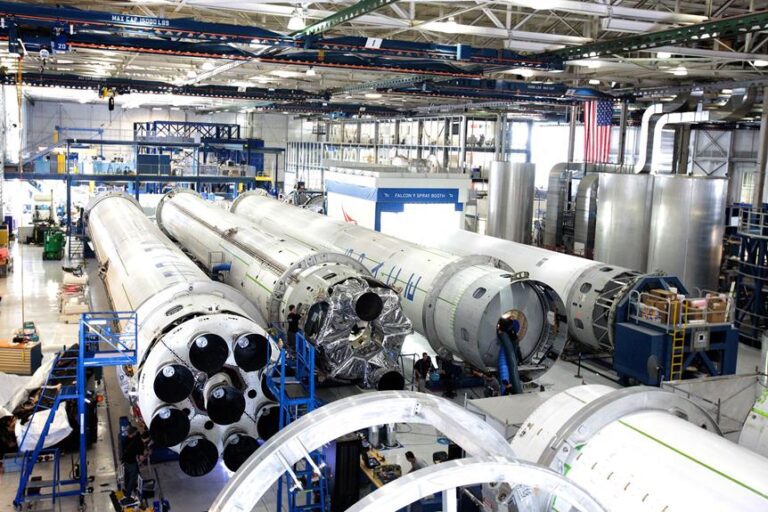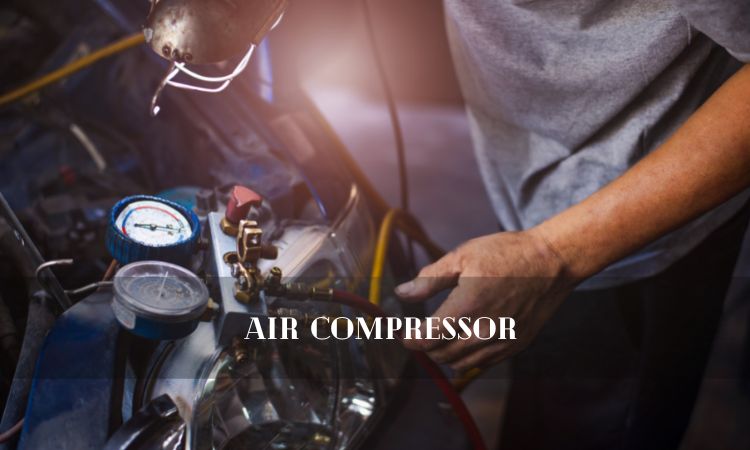Wheels of Power: Lightweight Wheels for Performance
As the tarmac beckons, every element of your vehicle's design becomes crucial. One such critical component is the wheel, often underestimated, yet holds immense power in performance. This article explores the transformative potential of lightweight wheels, delving into their science, manufacturing, effect on fuel efficiency, and role in racing. It demystifies common misconceptions and presents an analytical perspective on cost versus benefits. Gear up for a comprehensive understanding of lightweight wheels – an investment in liberation and performance.
Key Takeaways
- Lightweight wheels improve acceleration and braking performance by reducing rotational inertia.
- They contribute to a reduction in unsprung weight, enhancing suspension geometry and improving handling.
- Lightweight wheels increase fuel efficiency by reducing overall weight and rolling resistance.
- They offer benefits for regular road use, including improved vehicle responsiveness and control.
The Significance of Wheel Weight in Performance
The wheel-weight factor plays a pivotal role in vehicle performance, directly impacting factors such as acceleration, braking efficiency, and fuel economy. For this reason, a significant shift towards the use of lightweight wheels has been observed among vehicle enthusiasts and professionals alike.
Lightweight wheels, due to their reduced mass, lead to less rotational inertia. This allows for quicker acceleration and more efficient braking, in turn improving overall vehicle performance. Moreover, they contribute to a reduction in unsprung weight, enhancing the effectiveness of the tuned suspension geometry.
Wheel spacers, another key component in the performance equation, help in altering the vehicle's track width. They improve the grip and stability of the vehicle, particularly during high-speed cornering.
The integration of lightweight wheels and wheel spacers, along with a well-tuned suspension geometry, results in a more responsive and nimble vehicle. This combination liberates the vehicle's potential, enhancing its performance and driving experience.
Understanding the Physics Behind Lightweight Wheels
To appreciate the performance advantages of lightweight wheels, it is essential to understand the underlying physics. This involves examining three key areas: the impact of rotational inertia, the increase in energy efficiency, and the enhancements to acceleration and handling. These factors, when combined, illustrate the science behind the superior performance of lightweight wheels.
Rotational Inertia Impact
Before delving into the specifics of lightweight wheels, it is essential to spend time understanding the principle of rotational inertia and its significant impact on vehicle performance. Rotational inertia, also known as moment of inertia, is the resistance of an object to rotational acceleration or deceleration. In the context of high-performance tires, this principle becomes critical.
For instance, drag racing slicks, known for their lightweight characteristics, can improve acceleration due to reduced rotational inertia. Let's visualize this impact through the table below:
| Tire Type | Weight | Rotational Inertia Impact |
|---|---|---|
| Standard tires | High | High resistance to acceleration |
| High-performance tires | Medium | Moderate resistance to acceleration |
| Drag racing slicks | Low | Low resistance to acceleration |
Understanding this principle can liberate you from traditional tire choices, leading to enhanced vehicle performance.
Energy Efficiency Increase
In driving forward our discussion on lightweight wheels, we will now delve into the physics behind the increase in energy efficiency resulting from their use. Lightweight wheels reduce rotational inertia, which directly impacts the energy efficiency of a vehicle.
This can be understood through the following key points:
- Reduced weight means less energy is needed for acceleration and deceleration.
- This decrease in energy demand results in less fuel consumption, increasing the vehicle's overall efficiency.
- The reduced inertia also allows for quicker responsiveness, directly affecting overall vehicular control.
In essence, it is the reduction in weight that significantly enhances the efficiency of a vehicle, freeing you from the shackles of excessive fuel consumption. With this understanding, let's transition to our next topic: the effects of lightweight wheels on acceleration and handling.
Acceleration and Handling
One must appreciate the intricate physics involved when a reduction in wheel weight translates into enhancements in a vehicle's acceleration and handling capabilities. Lighter wheels reduce the unsprung mass of the vehicle, thereby decreasing the inertia. This leads to a quicker response time in acceleration and deceleration. Furthermore, lightweight wheels allow for more precise steering input. They reduce the gyroscopic effect, making it easier to change direction, thereby improving maneuverability. Also, they reduce the load on the suspension components, enabling them to follow the terrain more closely, which improves grip and handling. Overall, the use of lightweight wheels is a detailed example of how understanding the physics of vehicle dynamics can lead to substantial performance improvements.
Materials Used in Manufacturing Lightweight Wheels
The evolution of technology has profoundly influenced the selection of materials utilized in the manufacturing of lightweight wheels. In the pursuit of optimizing performance and durability, manufacturers have moved beyond traditional steel and iron. The focus is now on materials that offer superior strength-to-weight ratios, heat dissipation qualities, and resistance to wear and tear.
- Aluminum Alloy: This is the most common material used in lightweight wheel manufacturing due to its excellent balance between weight, strength, and cost. It is lighter than steel, offers good heat dissipation and can be cast into complex shapes.
- Carbon Fiber: This composite material is increasingly popular for high-end performance and racing wheels. It offers an exceptional strength-to-weight ratio and is highly resistant to corrosion and wear. Due to its high cost, it is mostly reserved for premium applications.
- Magnesium Alloy: Although less common, magnesium alloy is used for its extreme lightness and high thermal conductivity. However, it is more susceptible to corrosion and requires special care in maintenance.
These materials, when appropriately used, can significantly enhance the performance of a vehicle by reducing unsprung weight, improving acceleration, and providing better handling and braking response. The choice of material ultimately depends on the specific performance goals and budget considerations of the user.
The Impact of Lightweight Wheels on Fuel Efficiency
As we shift focus to the impact of lightweight wheels on fuel efficiency, it's crucial to understand the correlation between weight and fuel consumption. The physics of vehicular motion dictate that reduced wheel weight directly equates to lower fuel consumption, due to decreased rolling resistance. This topic will explore how the efficiency of lightweight wheels can significantly contribute to fuel economy, providing both environmental and economic benefits.
Fuel Consumption Reduction
Lightweight wheels, due to their reduced mass, can significantly impact fuel efficiency by decreasing the overall fuel consumption of a vehicle. This is achieved through a process known as 'unsprung weight reduction', which refers to the decrease in weight of any component of the vehicle that is not supported by the suspension. Other factors influencing this include:
- Wheel material: Aluminum, carbon fiber, and magnesium wheels are lighter than traditional steel wheels.
- Wheel design: Spoked or hollowed-out designs can reduce weight without compromising strength.
- Size of the wheel: Smaller wheels tend to be lighter, reducing the unsprung weight.
Ultimately, investing in lightweight wheels can lead to significant savings on fuel costs, making them an environmentally and financially wise decision for any conscious driver.
Lightweight Wheels Efficiency
Understanding the correlation between lightweight wheels and fuel efficiency necessitates an in-depth exploration of the physics involved. Lightweight wheels, by virtue of their reduced mass, require less energy to rotate. This decrease in energy expenditure can translate to greater fuel efficiency.
In the automotive industry, this principle is referred to as 'unsprung weight', which includes wheels and other components not supported by the vehicle's suspension. Reducing this weight can directly improve a vehicle's fuel economy. Further, lightweight wheels offer better heat dissipation, decreasing tire wear and enhancing overall performance.
Performance Comparisons: Lightweight Wheels Vs. Standard Wheels
The efficacy of lightweight wheels compared to standard wheels becomes evident when analyzing their performance in various driving conditions. Lightweight wheels have been engineered to provide numerous benefits that directly influence the vehicle's performance.
These benefits can be categorized into three main components:
- Acceleration: Lightweight wheels have less rotational mass, which allows the vehicle to accelerate faster. This is because less energy is required to set them in motion. In racing conditions, this can provide a significant advantage.
- Handling: The reduced weight of these wheels can lower the vehicle's unsprung weight, leading to better handling. The car is more responsive and nimble, offering a more connected driving experience.
- Fuel efficiency: By reducing the vehicle's overall weight, lightweight wheels can contribute to improved fuel efficiency.
However, it's crucial to mention that the performance benefits of lightweight wheels might not be as noticeable in everyday city driving as they are in track or racing conditions. Furthermore, lightweight wheels are typically more expensive than standard ones. Thus, the choice between lightweight and standard wheels often comes down to a balance of performance gains, driving conditions, and budget constraints.
Top Brands Offering Lightweight Wheels
Amid the vast market of automobile components, both BBS and Volk Racing stand out for their superior quality, crafting wheels with a focus on performance and lightweight construction. BBS, a German company, is renowned for its commitment to innovation, durability, and precision. Volk Racing, a division of the Japanese Ray's Engineering, is famous for its high-quality forged wheels made from advanced alloys.
Now let's delve into the specifics. Below is a table that further explores some top brands offering lightweight wheels:
| Brand | Country of Origin | Notable Product |
|---|---|---|
| BBS | Germany | BBS Super RS |
| Volk Racing | Japan | Volk TE37 |
| Enkei | Japan | Enkei RPF1 |
| OZ Racing | Italy | OZ Ultraleggera |
| ADV.1 | USA | ADV005 M.V2 CS |
These brands offer products that not only enhance your vehicle's performance but also add an aesthetic appeal. They are built with meticulous craftsmanship, ensuring they withstand the rigors of high-speed driving and harsh road conditions. Opting for these brands means choosing quality, durability, and, most importantly, performance without the burden of excess weight. Allow your vehicle the liberation it deserves.
The Role of Lightweight Wheels in Racing
Lightweight wheels play a critical role in racing, particularly in enhancing speed, improving handling, and demonstrating durability under pressure. The reduction in unsprung weight, attributable to lighter wheels, fundamentally contributes to a vehicle's quicker acceleration and more responsive braking. Furthermore, the resilience of these wheels under the strenuous conditions of a race track exemplifies their importance in this high-performance context.
Enhancing Speed
In the high-speed world of racing, utilizing lightweight wheels significantly boosts performance by reducing the overall mass that the engine needs to propel. This reduction in unsprung weight offers three main advantages:
- Enhanced acceleration: Lightweight wheels allow for quicker acceleration by reducing rotational inertia, which translates into faster lap times.
- Improved handling: A decreased wheel weight results in less gyroscopic effect, providing the driver with greater control and maneuverability during sharp turns.
- Fuel efficiency: The reduction in wheel mass reduces the amount of energy required to keep the vehicle in motion, leading to improved fuel economy.
Thus, in the quest for speed and efficiency, the role of lightweight wheels in racing is undeniably crucial.
Improved Handling
Frequently in competitive racing, improved handling is directly attributed to the use of lightweight wheels, which lend themselves to greater control and maneuverability. These wheels, often crafted from high-quality alloys, significantly reduce unsprung weight, thus enhancing the suspension's effectiveness. This reduction also decreases rotational inertia, allowing for more rapid changes in direction. Moreover, they improve the vehicle's balance, enabling the driver to maintain stability at high speeds and tight turns. Lightweight wheels also contribute to enhanced braking performance, given that less mass needs to be decelerated. In essence, the role of lightweight wheels in racing is pivotal. They do not merely serve as a supportive base, but as an integral component in amplifying a vehicle's overall performance and handling precision.
Durability Under Pressure
Often overlooked, the durability of lightweight wheels under extreme pressure plays a crucial role in the high-stakes world of competitive racing. The resistance to deformation and breakage of these wheels significantly contribute to their performance and reliability on the track.
Several factors influence their durability:
- The quality of materials used: High-grade alloys typically offer greater strength and durability.
- Manufacturing processes: Advanced techniques like flow-forming enhance the structural integrity of the wheels.
- Design specifics: Features such as spoke patterns can affect the wheel's ability to withstand pressure.
It's crucial to note that no matter how durable, lightweight wheels are not invincible. Proper care is essential to ensure their continued performance. Look forward to the next section, where we delve into maintenance tips for lightweight wheels.
Maintenance Tips for Lightweight Wheels
Maintaining the performance and longevity of lightweight wheels requires a set of five important maintenance practices. These practices not only ensure the optimal performance of the wheels, but also contribute significantly towards their prolonged lifespan.
The following table outlines these five practices:
| Maintenance Practices | Why It's Important | How Often |
|---|---|---|
| Regular Cleaning | Prevents build-up of dirt and debris that can cause damage | Once a week |
| Tyre Pressure Check | Ensures optimal performance and fuel efficiency | Every two weeks |
| Wheel Balancing | Prevents uneven tyre wear and vibration | Every 5,000-6,000 miles |
| Wheel Alignment | Improves vehicle handling and extends tyre life | Every 10,000-12,000 miles |
| Regular Inspection | Identifies potential issues early | Every six months |
Adhering to these maintenance practices will not only empower your journey but will also liberate you from the potential hassles and costs of unexpected wheel damage or failure. Remember, in the realm of performance driving, vigilance and proactive care play a pivotal role in maintaining the strength and endurance of your lightweight wheels.
Overcoming Myths About Lightweight Wheels
Despite the proven benefits, myths about lightweight wheels persist, and it is crucial to dispel these misconceptions to fully appreciate their performance-enhancing capabilities. Common fallacies include the belief that they are significantly more fragile than regular wheels or that their performance benefits are negligible.
Let's debunk these myths:
- Myth 1: Lightweight wheels are fragile. In reality, these wheels undergo rigorous testing to meet industry standards. They're designed to withstand the same, if not more, stress as standard wheels.
- Myth 2: Performance gains are minimal. Lightweight wheels decrease unsprung weight, which can lead to significant improvements in acceleration, braking, and handling.
- Myth 3: Lightweight wheels are only for racing. While they are popular in racing due to their performance advantages, they also offer benefits for regular road use, including improved fuel efficiency.
Understanding the truth behind these myths allows us to liberate ourselves from misguided notions and fully exploit the capabilities of lightweight wheels. It's not just about reducing vehicle weight; it's about enhancing overall performance and efficiency. So, don't let misconceptions steer you away from these wheels' true potential.
Investing in Lightweight Wheels: Cost Vs. Benefit Analysis
While lightweight wheels may initially appear to be a substantial investment, a thorough cost versus benefit analysis can reveal them to be a value-adding choice for those seeking to enhance their vehicle's performance. The decision to invest should not be based solely on upfront costs, but rather a comprehensive understanding of their long-term value and impact on your vehicle's overall performance.
| Cost Factors | Benefits |
|---|---|
| Initial purchase price | Improved acceleration and fuel efficiency |
| Potential installation costs | Enhanced handling and braking performance |
| Maintenance costs | Reduced wear on suspension components |
| Resale value | Aesthetic appeal and potential increase in vehicle resale value |
The initial purchase and potential installation costs may be higher than standard wheels, but this is offset by improved acceleration, fuel efficiency, and vehicle handling. Lightweight wheels also put less strain on suspension components, reducing maintenance costs over time. Furthermore, they add to the aesthetic appeal of your vehicle, potentially increasing its resale value. Hence, while the upfront costs may be higher, the long-term benefits make lightweight wheels a sound investment for those seeking to optimize their vehicle's performance.
Frequently Asked Questions
What Are the Environmental Impacts of Producing Lightweight Wheels?"
The production of lightweight wheels has environmental impacts including increased energy use, potential pollution from manufacturing processes, and the extraction of raw materials, which can contribute to habitat destruction and resource depletion.
How Do Lightweight Wheels Affect the Braking Performance of a Car?"
Lightweight wheels can positively impact a car's braking performance. They reduce unsprung weight, thereby improving brake responsiveness and decreasing stopping distance. However, their effect may vary depending on the brake system's overall design and efficiency.
Are There Any Specific Driving Conditions Where Lightweight Wheels Should Be Avoided?"
Lightweight wheels should generally not be avoided under any specific driving conditions. However, they might not be suitable for off-road or harsh terrains due to their focus on performance rather than durability.
Can Lightweight Wheels Be Customized According to Individual Preferences?"
Yes, lightweight wheels offer a degree of personalization. One has the liberty to choose the design, coating, and color. However, customization should not compromise the wheel's structural integrity or performance standards.
Is There Any Government Regulation on the Use of Lightweight Wheels?"
Yes, government regulations exist for lightweight wheels, primarily focusing on safety standards. These regulations ensure structural integrity and performance reliability, while also considering factors like material composition and manufacturing processes to ensure road safety.
Conclusion
In conclusion, lightweight wheels, due to their reduced weight, provide notable performance improvements, fuel efficiency, and racing advantages over standard wheels. Despite common misconceptions, they are durable and their benefits justify the investment. Regular maintenance ensures their longevity. Therefore, they are an invaluable asset for any performance-oriented vehicle, contributing significantly to the larger mechanism of automotive engineering.







